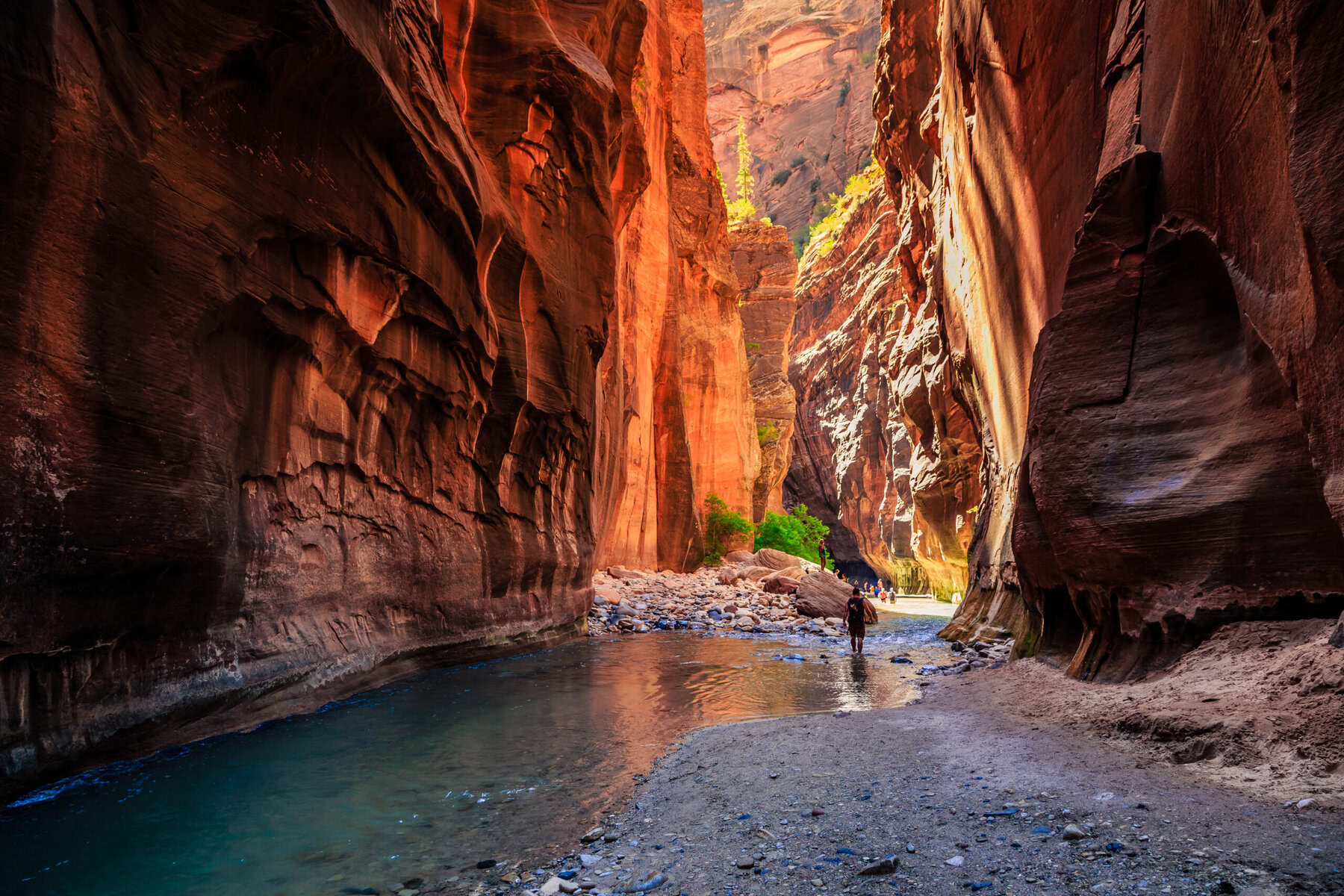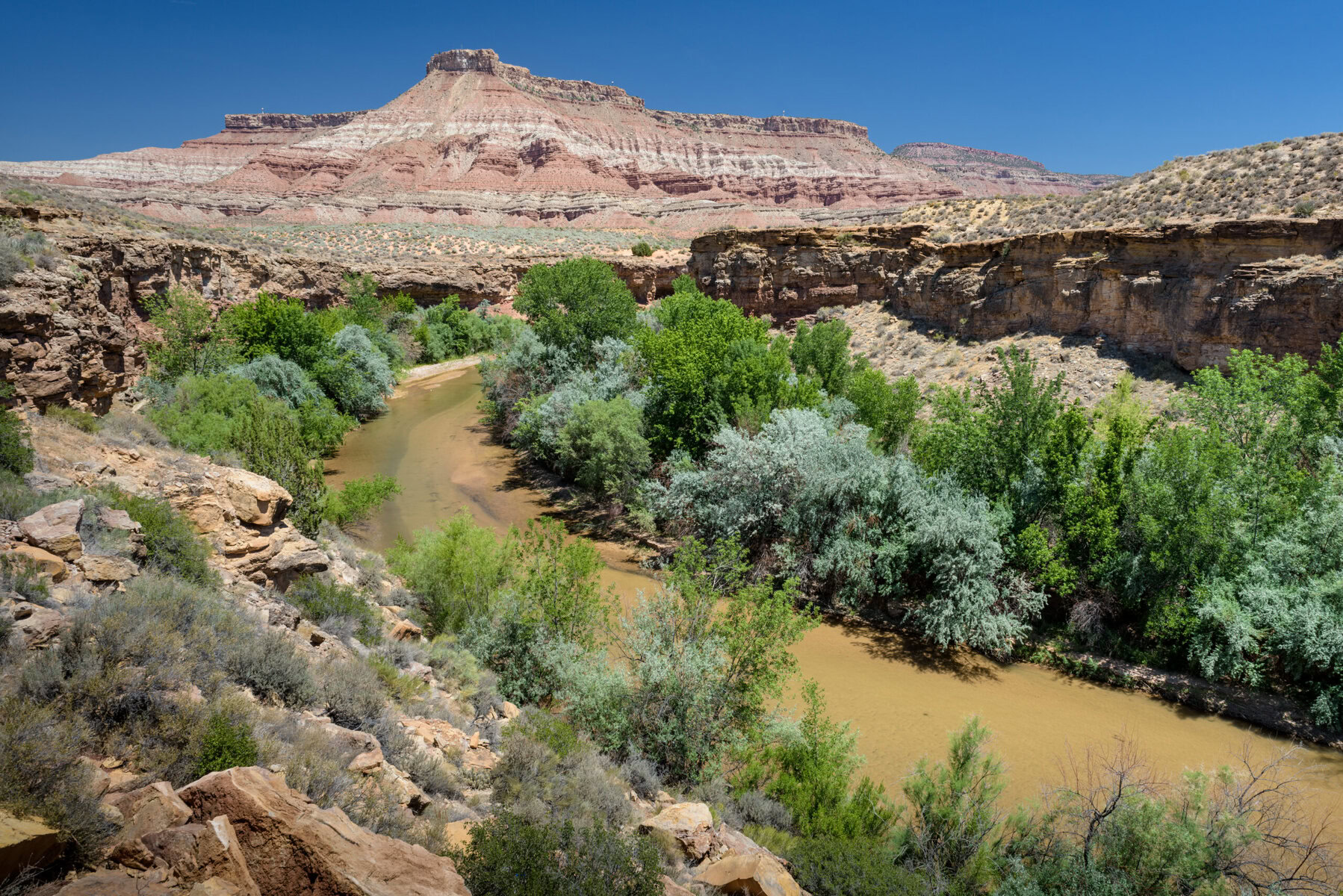As part of this effort, the new Chief Toquer Reservoir is under construction 20 miles northeast of St. George. The $75 million project, slated for completion in 2025, includes a 19-mile underground pipeline intended to retain up to 3,500 acre-feet of water that is currently lost to seepage at nearby Ash Creek Reservoir.
Meanwhile, a controversial proposal for a 143-mile Lake Powell pipeline, which would import 86,000 acre-feet of water to Washington County, has not progressed amid ongoing efforts to maintain adequate water levels in the reservoir. This was previously considered the savior of Washington County’s water woes, but the hamstrung project has pushed the region to look toward conservation instead. Despite last winter’s above average precipitation, the Colorado River’s Lake Mead and Lake Powell — the largest reservoirs in the country — are only at 36 and 31 percent of capacity respectively.


The Colorado River supplies water to 40 million people across its basin. The Virgin, a tributary of the Colorado, cascades from a cave tucked high in the pink cliffs of the Markagunt Plateau, before flowing through Zion National Park on its way to a 500-million-year-old gorge. On its descent, it enters seven reservoirs that distribute water across Washington County. One hundred and sixty miles from its source, the remaining water arrives at Lake Mead in the northern Mojave Desert.
High demand and aridification have reduced the Colorado River system’s flows — including the Virgin’s. Utah is one of seven states (along with Arizona, California, Nevada, New Mexico, Colorado and Wyoming) that must cut down on Colorado River consumption and create a new drought management plan by 2026. While the states don’t yet align on the best approach, there is one water conservation effort they all agree upon: to reduce non-functional turf by 30 percent.
In 2023, the Utah Legislature approved a water-efficient landscaping program as part of the state’s goal to reduce per-capita water use by 25 percent by 2025. Utah is implementing landscaping parameters that restrict lawns to no more than 50 percent of a landscaped area in new residential developments (still much higher than Washington County’s eight percent.) Three other water conservancy districts in Utah have implemented landscaping ordinances, but they are not as expansive as what is included in Washington County’s program. “The state funding may not be used on parks or golf courses, but Washington County’s program includes them,” Bennett notes. “We also rebate conversion of manmade water features such as swimming pools, ponds and ornamental streams.” The county also created its own customer engagement process, which Bennett points to as one reason that participation has been higher here than in the other districts: “It makes it a bit easier for customers to communicate with our program and understand the status of their project.”
Crushed by negative news?
Sign up for the Reasons to be Cheerful newsletter.
While removing turf can make a big difference in residential water use, that alone cannot shoulder the burden of reducing water consumption. The majority of Washington County water is used for irrigation; statewide, a whopping 68 percent of diverted water is used to grow alfalfa for the beef and dairy industry. This is even higher than other Colorado River states, which utilize an average of 46 percent of water diverted from the river to grow alfalfa and other cattle feed crops. A recent study shows that reducing demand for these products can create some of the biggest water savings from citizens.
And while turf buyback programs and other water conservation measures are designed to ensure an adequate water supply for a growing population, it’s also important to consider a more fundamental need: to keep water flowing in the Virgin River. The river shapes the iconic landscape of Zion National Park, which draws five million visitors per year, and supports wildlife habitat within the park and beyond. Six native fish call the Virgin River home, two of which are endangered.


“There are tremendous water demands on [this] small river,” explains Elaine York, West Desert regional director for The Nature Conservancy in Utah. York says a significant portion of the river between Zion and St. George is conserved, meaning owned and managed by organizations or government agencies to maintain a relatively natural state and function as part of a healthy river system. This includes two parcels purchased by The Nature Conservancy, which is working with the Virgin River Program — a collaborative effort between local, state, and federal partners — on efforts to balance human water use with conserving the Virgin River ecosystem and protecting native (and some endangered) species. Among these projects, The Nature Conservancy is working with Hurricane, a small city near Zion National Park, to fund and redesign a more efficient water delivery system that reduces water loss during transport.
While grass buyback programs alone won’t save the Virgin or the Colorado River, they are an effective way citizens can cut their daily water use — and a clear demonstration of how successful and lasting changes in water use can begin with government-led incentives that incite broader cultural shifts. For now, Bennett is encouraged by Washington County’s buy-in to rip out turf. “Southern Utah residents have been very receptive to water conservation measures,” he says. “The projects we’re seeing are proof that we can sustain an even higher quality of life while leaving a smaller footprint on our watersheds.”

